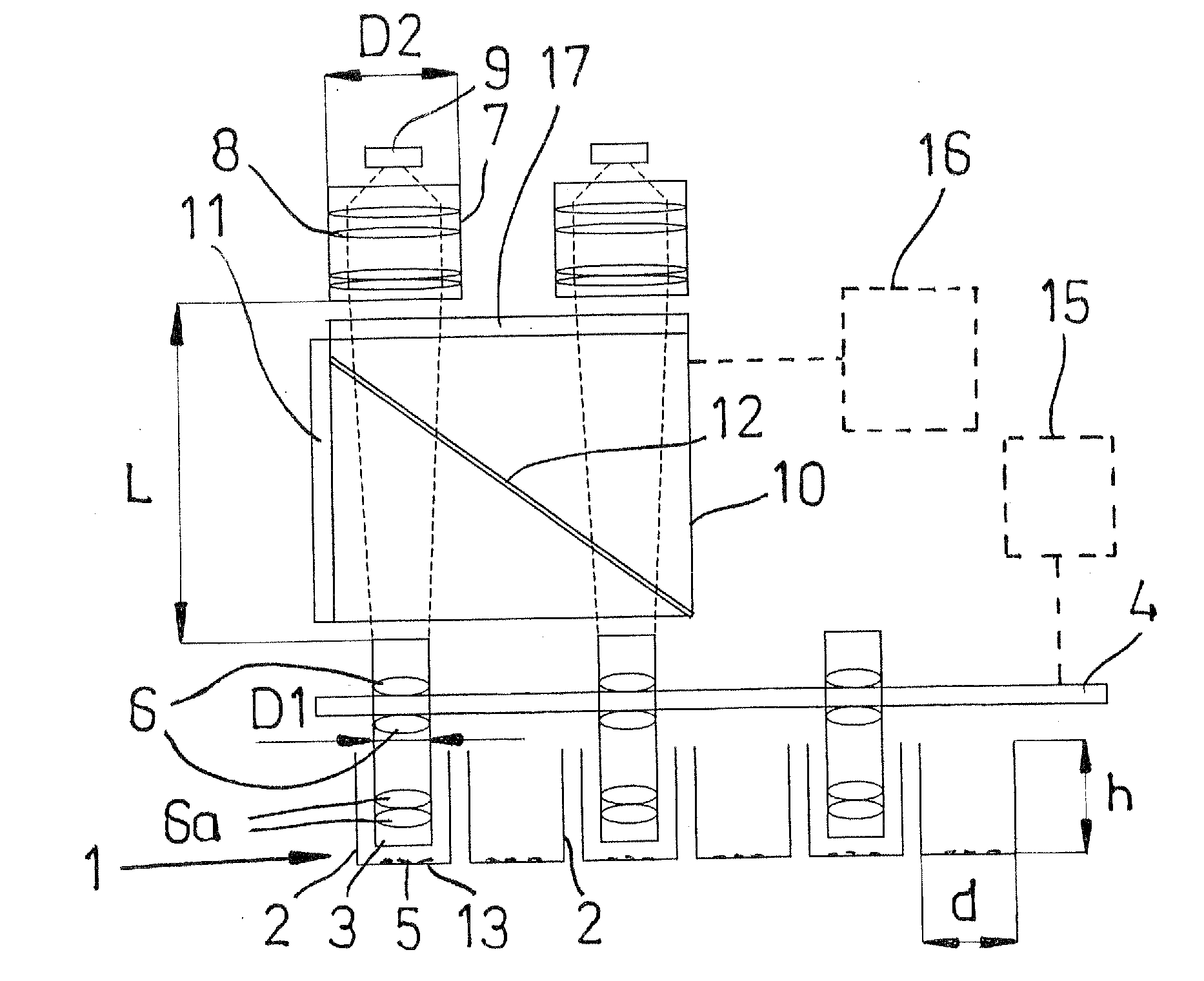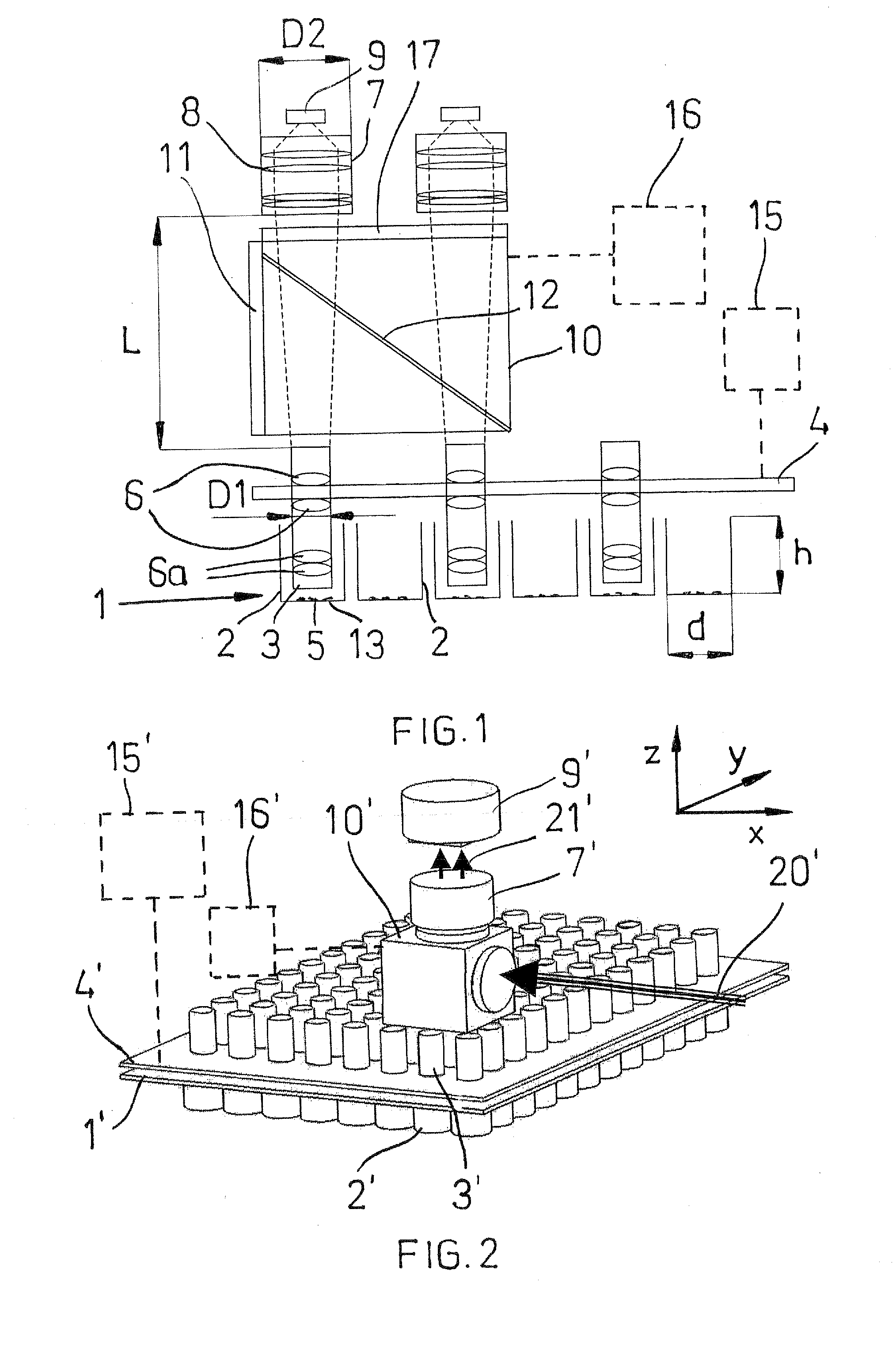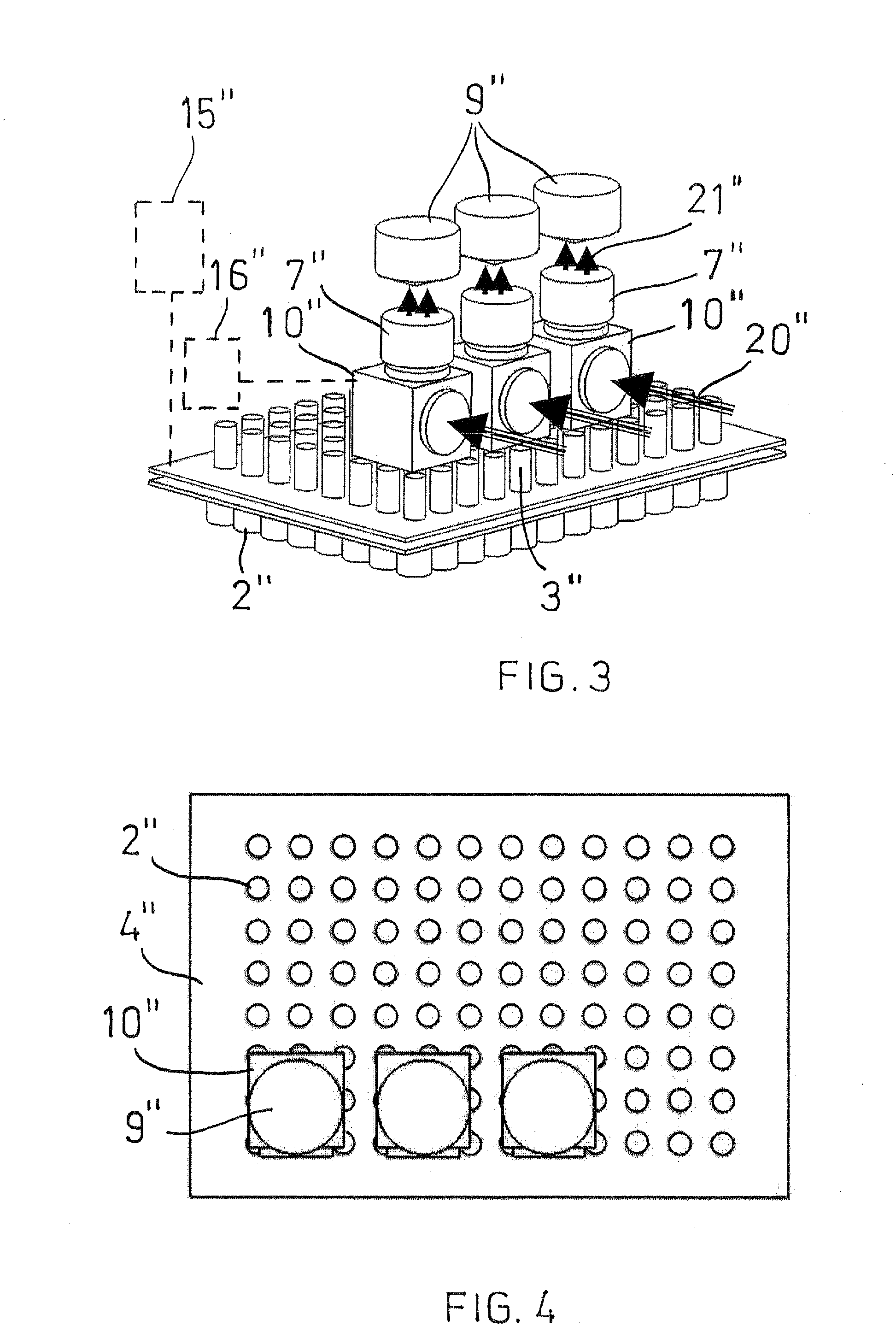Arrangement in an Imaging System for Microtitre Wells
an imaging system and microtitre technology, applied in the field of imaging systems for samples placed in microtitre wells, can solve the problems of high resolving power, inability to use large diameter wells, and inability to use wide and shallow wells, etc., to facilitate the placement of lens groups, rapid imaging, and rapid assay
- Summary
- Abstract
- Description
- Claims
- Application Information
AI Technical Summary
Benefits of technology
Problems solved by technology
Method used
Image
Examples
second embodiment
[0046]FIG. 2 shows the arrangement according to the invention. In FIG. 2, the same reference numbers are used as in FIG. 1 for corresponding components.
[0047]The arrangement of FIG. 2 differs from the embodiment of FIG. 1 in that a separate objective 3′ is installed in each well 2′, and only one lens group / camera combination 7′, 9′ is arranged to image the samples in the wells. The objectives 3′ rest on the holder 4′. A horizontal arrow 20′ indicates excitation light and an upwards-directed double arrow 21′ indicates emission light.
third embodiment
[0048]FIG. 3 shows the arrangement according to the invention. In FIG. 3, the same reference numbers are used as in FIG. 1 for corresponding components. The arrangement of FIG. 3 differs from the embodiment of FIG. 2 in that three lens group / camera combinations 7″, 9″ are arranged to image the samples. Compared with the arrangement of FIG. 2, an about threefold speed is achieved in sample imaging. The arrangement of FIG. 3 is considerably more expensive than the arrangement of FIG. 2, since it comprises two more lens group / camera combinations 7″, 9″.
[0049]FIG. 4 is an illustrative top view of the arrangement of FIG. 3. Each lens group is arranged to receive light rays from one objective only. The diameter of the lens group is significantly larger than the diameter of the light beam emitted from the objective, owing to which there is no need to align the lens group on the x-y plane such that its optical axis is exactly in line with the optical axis of the objective, in order for the ...
fourth embodiment
[0050]FIG. 5 shows the arrangement according to the invention. In FIG. 5, the same reference numerals are used as in FIG. 1 for corresponding components.
[0051]In FIG. 5, the objective 3′″ is composed of usual lenses 6′″ arranged above a well 2′″ and a gradient index lens (GRIN lens) 6a′″ arranged inside the well. A thick broken line 20′″ depicts the passage of excitation light (from left to right). A dotted line 21′″ depicts a common light path of the excitation light and the emission light, and a thin broken line 22′″ depicts the light path of the emission light (from down upwards).
PUM
 Login to View More
Login to View More Abstract
Description
Claims
Application Information
 Login to View More
Login to View More - R&D
- Intellectual Property
- Life Sciences
- Materials
- Tech Scout
- Unparalleled Data Quality
- Higher Quality Content
- 60% Fewer Hallucinations
Browse by: Latest US Patents, China's latest patents, Technical Efficacy Thesaurus, Application Domain, Technology Topic, Popular Technical Reports.
© 2025 PatSnap. All rights reserved.Legal|Privacy policy|Modern Slavery Act Transparency Statement|Sitemap|About US| Contact US: help@patsnap.com



